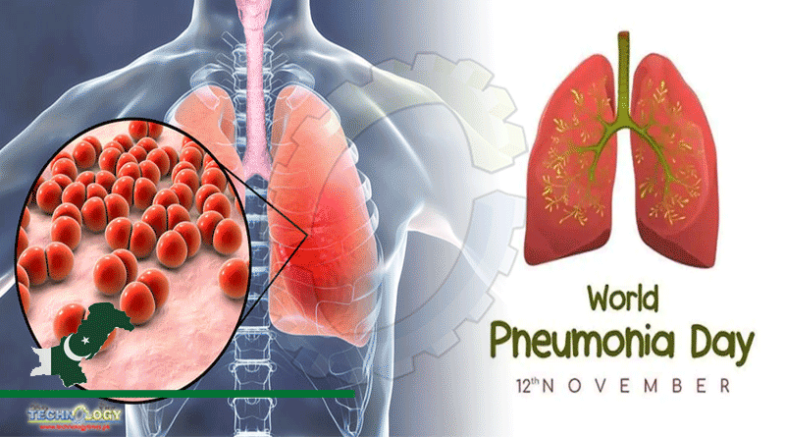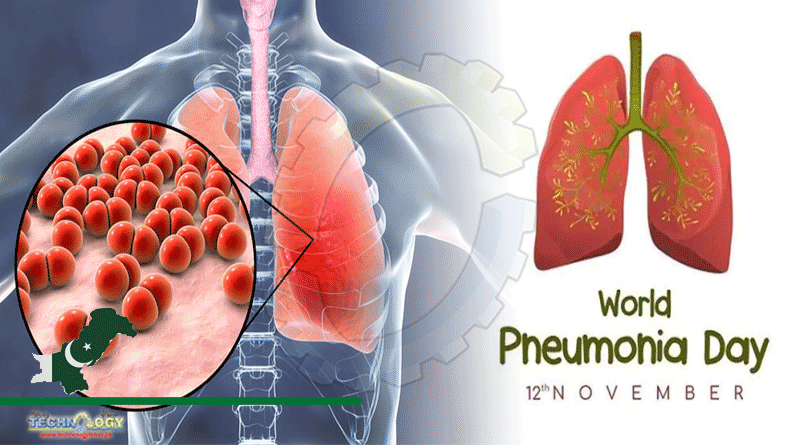This World Pneumonia Day in the age of Covid-19, is reminder of the urgent need to reduce health inequality to ensure no child dies from pneumonia.

High temperature with heavy breathing and wheezing; nine-month old Tehreem is cuddled in her mother’s arms. Nasreen, 22, had taken her to the health house in her neighbourhood and then to the lady doctor who sits in the clinic in the main G-6 Markaz, but no one could tell her what was wrong.
Within a few days, her situation got worse as she started to struggle with her breathing, chest heaving up and down. That’s when she had to be rushed to the Emergency at Pakistan Institute of Medical Science (PIMS). It was there that the doctor gave her an injection and got a chest X-ray. The report arrived some three hours later, the doctor confirmed that Baby Tehreem had suffered a pneumonia attack.
With the plastic cannula inserted in her tiny little hand, Nasreen was able to take her baby girl home; the katchi abadi in Bari Imam in the outskirts of Islamabad. The doctor had prescribed an antibiotic injection course for the next seven days. Although the hospital did not charge for the vaccination, it was too far from home. Nasreen took her to a private clinic, paying Rs 100 per injection, twice a day to complete the 14 injections. Even before the antibiotic course was complete, baby Tehreem had recovered from pneumonia.
However, every Pakistani child is not as fortunate as Tehreem.
Known as the world’s leading infectious killer under five, globally, pneumonia claims one child every 39 seconds.
Experts feel the earlier a pneumonia suffering child is brought to a health facility, the more the chances of saving the little life. In our country children with severe pneumonia undergo a number of trial and errors, before they could actually reach the right health facility for the right treatment at the right time. It is therefore important to reach a child specialist whether at a private or a public hospital.
There are many factors which make pneumonia an important cause of infant and child mortality. Malnutrition is the dominant risk factor for pneumonia and pneumonia associated mortality as babies with low birth weight and poor nutrition make our children more prone to pneumonia.
Babies who live in overcrowded places, where indoor pollution levels are high and sanitation is poor, are particularly susceptible. Low rate of exclusive breastfeeding for the first six months of life is another major concern which makes our children more vulnerable. Therefore, prevention is to be focused on more as compared to treatment.
Pneumonia experts have recently warned that children in these settings may be more vulnerable to COVID-19 due to a confluence of risk factors including malnutrition, air pollution, low vaccination rates and poor access to healthcare.
In 2012, with support from Gavi, the Vaccine Alliance, Pakistan became the first South Asian country to introduce a vaccine for pneumonia, a cost-prohibitive vaccine costing a little over 133 US dollars (in 2012) for the entire course of three injections.
However, the government, with support from Gavi, the Vaccine Alliance provides it for free in its Expanded Programme on Immunisation for the entire cohort of 7.9 million children born in the country. And yet, it killed more than 58,000 children under-five in 2018—more than 7 child every hour.
The biggest hurdle in Pakistan`s fight against pneumonia is the low routine immunisation (RI) coverage which stands at a dismal 66 percent, according to PDHS 2017/18.
If administered, vaccines like pneumococcal conjugate vaccine and haemophilus influenza type B (Hib) which targets the leading bacterial causes of childhood pneumonia have the potential to save thousands of lives, drastically reducing Pakistan’s under five mortality rate. Yet children continue to die from this illness.
Also known as the poor child’s disease, World Pneumonia Day can push families into poverty. This is because poorer children are less likely to be protected against diseases but are also less likely to be able to access treatment for the diseases that they are not protected against.
This traps them in a cycle of poverty and poor health—a cycle that becomes more difficult to escape with each case of vaccine preventable disease and its associated costs to the family.
A deeper dive reveals that access substantially varies by geography and income status. In 2018, PCV-3 coverage among 1-year olds stood at 90 percent amongst the richest households while it was only 50 percent for the poorest households
Reaching these harder-to-reach communities, children living in the urban slums and security compromised areas, who have never been vaccinated is the only way we can actually reach our goals of ending preventable child deaths.
This World Pneumonia Day in the age of Covid-19, is a sombre reminder of the urgent need to reduce health inequality and to ensure no child dies from pneumonia or any vaccine preventable disease.
Originally published at Nation
